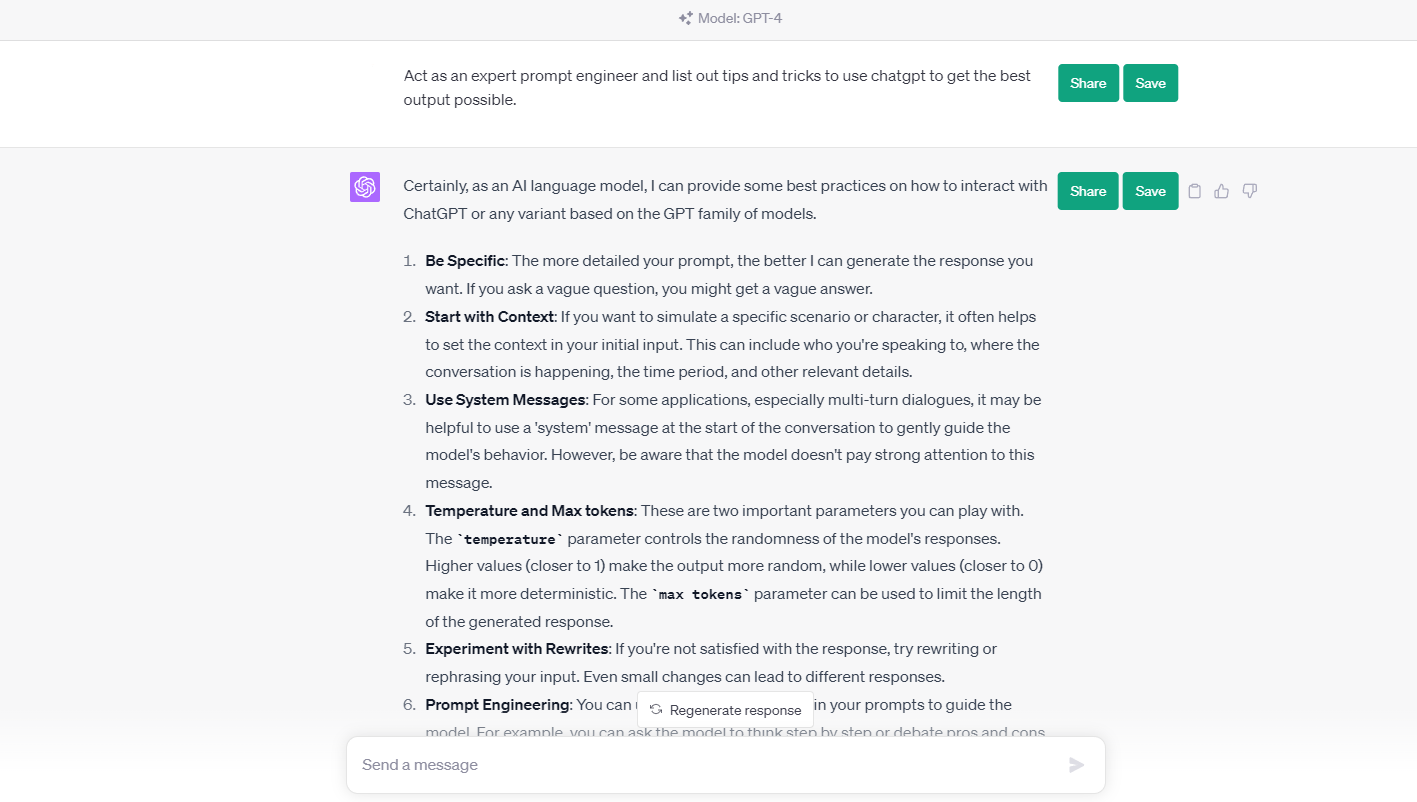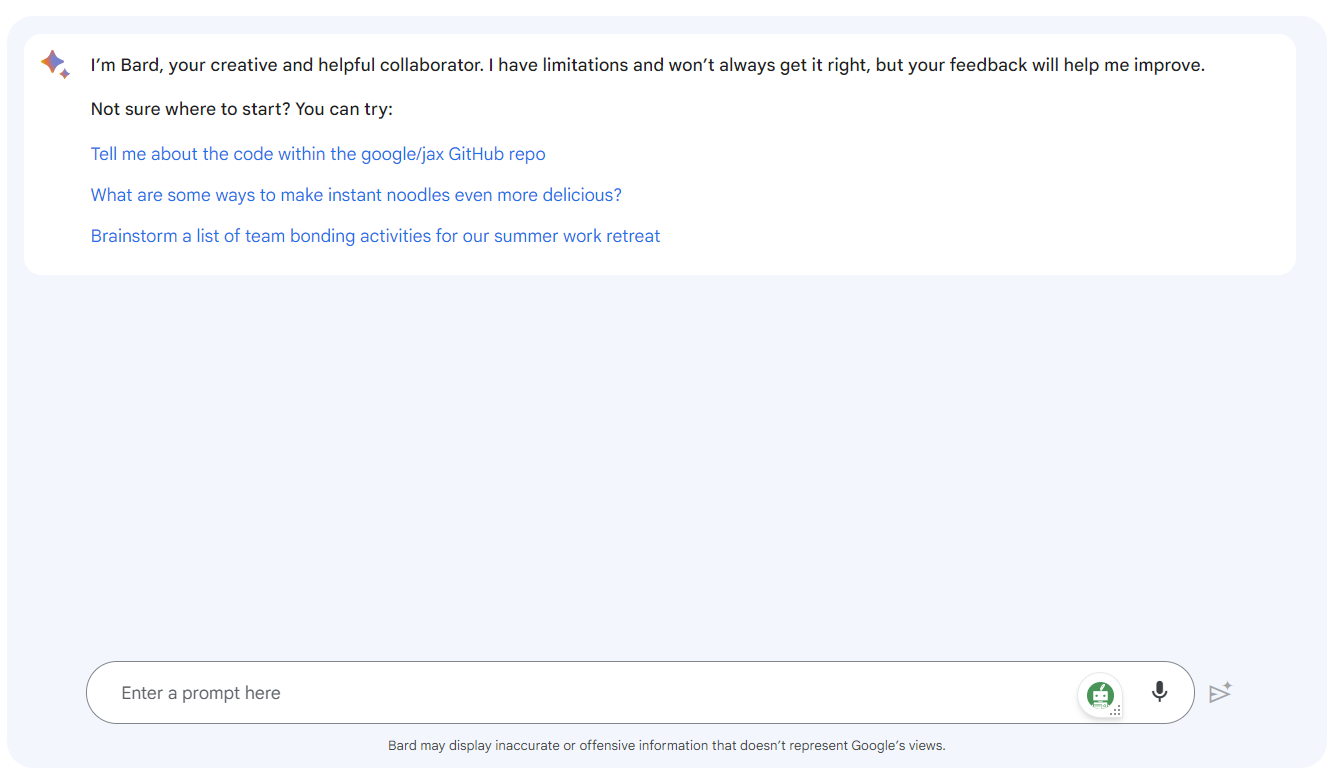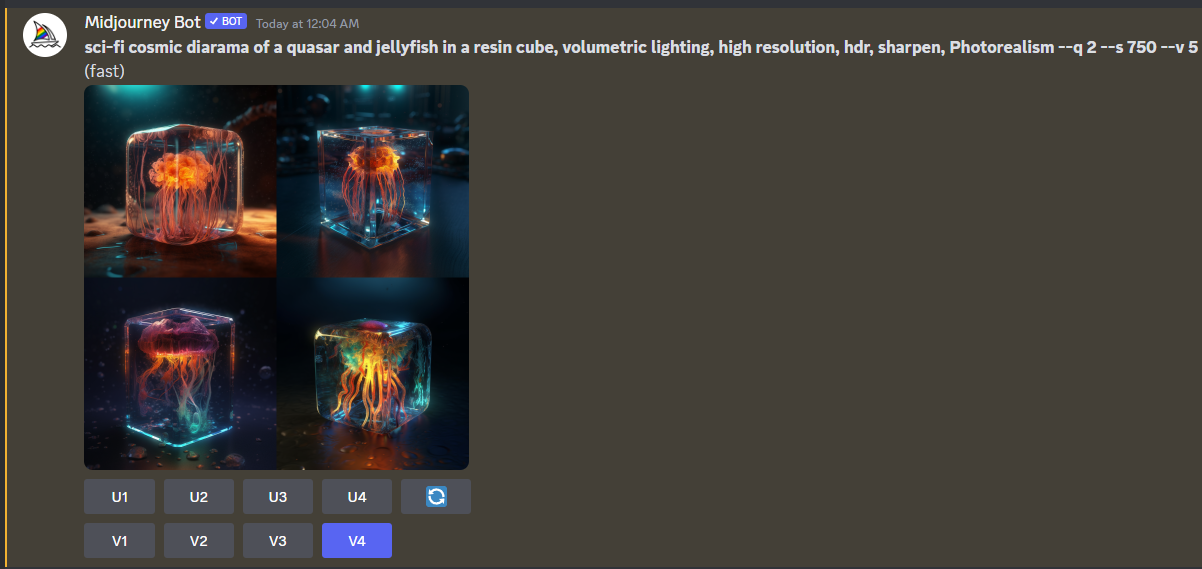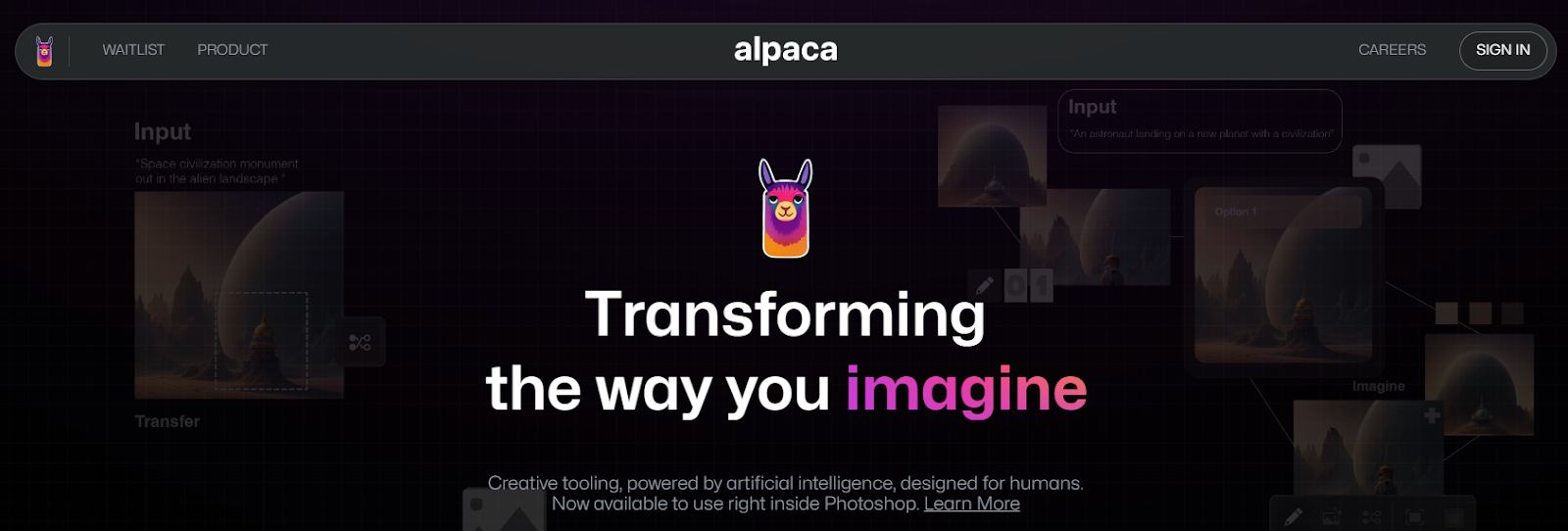Artificial intelligence (AI) has created a world in which anyone can compose music, create art, or even write a complete movie script with a few keystrokes. As the global generative AI market is expected to surpass $22 billion by 2025, the realm of generative AI is reshaping industries and redefining the limits of artificial intelligence.
This guide aims to provide an in-depth understanding of generative AI technology, its applications, and future prospects.
What is generative AI?
Generative AI refers to a type of artificial intelligence that can create new data based on existing patterns, simulating some of the logical aspects of human creativity. The core principles that underpin generative AI models allow them to learn from existing data, analyze trends and patterns, and generate novel outputs.
There are two types of machine learning models. Discriminative models focus on discerning differences between various data points. They seek to predict outcomes or categorize data points based on learned patterns. On the other hand, generative models leverage their in-depth understanding of the data distribution to generate new output, leading to creative and often unexpected results.
Later in the article, we will explore some of the technical concepts related to generative AI, such as generative adversarial networks (GANs), deep learning, and recurrent neural networks form the backbone of this technology.
What are the current applications of generative AI?
Generative AI has become increasingly prevalent in various industries, transforming the way we work, learn, and interact. As we venture further into 2023, the range and diversity of applications continue to expand, driven by advancements in natural language processing, machine learning, and deep learning technologies.
The list of applications seems almost endless, but in this article, we highlight some of the top current examples of generative AI that are revolutionizing industries and making a lasting impact:
- Content generation: Generative AI tools like ChatGPT can create original blogs and other marketing materials, code, and creative ideas, helping businesses streamline operations and stay competitive.
- Image generation: Generative AI tools can create new images based on existing ones, such as portraits or landscapes, and transform text into images, generating realistic visuals based on user-defined settings, subjects, styles, or locations.
- Sports: Content creators, from teams to federations, can use generative AI, natural language processes, and AI-generated voice to create content in multiple languages, driving global fan experiences.
- Advertising and entertainment: Brands, broadcasters, and studios can keep up with increasing audience demands for content, extend reach to multiple markets, and improve brand accessibility, all while saving money and time, using using AI-generated, pre-built assets.
- Legal sector: Generative AI applications are transforming the practice of law by speeding up document reviews, managing unstructured data, and enhancing early case assessments. Additionally, AI-driven solutions automate redaction of sensitive information and facilitate translation services.
- Governments: Generative AI can revolutionize government operations, significantly improving information management, enhanced citizen services, data-driven decision making, proactive problem solving, increased transparency, and workforce transformation, all while reducing costs, improving accessibility and ensuring data privacy.
- Talent acquisition: Engage and qualify talent during the hiring process through a combination of domain-specific large language models and a knowledge graph to build candidate profiles. The use of AI in HR functions not only streamlines the overall hiring experience but also minimizes human bias in the process.
- Drug discovery in healthcare: Generative AI helps identify potential drug candidates and accelerates the drug discovery process by analyzing large datasets and generating novel molecular structures.
- Augmenting lesson development in education: Generative AI helps educators uncover more resources at scale, and can customize learning materials and adapt content to individual students’ needs, improving the learning experience.
- Estate planning: Generative AI assists in drafting wills and other legal documents, making the process more efficient and accurate.
- Fraud detection in banking: Generative AI analyzes transaction data to identify patterns and detect fraudulent activities, helping financial institutions mitigate risks.
- Automotive industry: Generative AI is used in the design and development of new vehicles, optimizing components for performance, efficiency, and aesthetics.
These applications of generative AI showcase its enormous potential to reshape industries and enhance human capabilities. With continuous development and improvement in AI technologies, we can expect even more groundbreaking applications and innovations in the years to come.
The Technology Powering Generative AI
Deep Learning and Neural Networks
The foundation of generative AI lies in deep learning algorithms, which are designed to run against multiple layers of neural networks in constantly changing fashion. Neural networks are sets of pre-trained, decision-making networks designs to serve around a particular task—they enable machines to learn from data. These neural networks are designed to mimic the structure and functionality of the human brain, allowing them to process vast amounts of information and make sense of complex patterns.
Training data, the data used to train algorithms or machine learning mdoels, plays a crucial role in developing effective generative models, as it provides the foundation upon which the AI algorithms learn and improve. Model architecture, which refers to the structure and organization of the neural networks, is another essential aspect that determines the performance and efficiency of generative AI.
Generative Adversarial Networks (GANs)
One of the most widely known generative AI technologies are GANs. These networks consist of a generator and a discriminator, which work together to create realistic outputs. The generator produces novel data, while the discriminator compares this generated data to the real data to assess its authenticity. Over time, the generator becomes better at creating realistic data, and the discriminator becomes more efficient at discerning real and generated outputs.
Popular GAN applications include image synthesis, where realistic images are generated based on specific data or styling cues, and style transfer, which involves applying one image’s style onto another.
Reinforcement Learning and Transfer Learning
Reinforcement learning and transfer learning are essential concepts in generative AI that enable machines to learn from a variety of sources and experiences. Reinforcement learning allows machines to learn from trial and error, improving their performance over time. This approach is particularly useful in robotics and gaming applications.
Transfer learning leverages the knowledge gained from one task or domain and applies it to another, related task or domain. By utilizing pre-trained models and knowledge, transfer learning can significantly reduce the time and resources required to train an AI model for a new task.
Generative AI Tools
Building on the foundations and applications of generative AI, a variety of tools have emerged to harness its potential. While ChatGPT has probably captured the attention of family members and late night talk show hosts, there are a number of key platforms to consider at the enterprise level. In this section, we will highlight top generative AI tools that showcase this technology’s capabilities and versatility.
ChatGPT by OpenAI
ChatGPT is an AI-powered text generator designed for conversational usage, built by OpenAI. Its underpinning technology is the Generative Pre-trained Transformer (GPT) series of large language models, or LLMs.
ChatGPT specializes in holding coherent text-based discussions with users, answering questions, and assisting in tasks such as composing emails, essays, and code. The model can provide articulate and detailed responses across various knowledge domains, making it an invaluable asset in areas like customer support, content creation, and information retrieval.

Some of the use cases we’ve uncovered with generative AI models like ChatGPT include creating real-time play-by-play sports commentary, personalized conversations and videos as we did for Cameo Kids. It can also be applied to make talent recruiting more of a 24/7 experience without canned or robotic responses. But the real exciting area is creating domain-specific content. Rather than leveraging a generic data base, like the internet, companies that use their own databases with these models can make more relevant content to their brand and their target audiences.
Google Bard
This conversational AI service is powered by LaMDA, a large language model designed for versatility, creativity, and intelligence. Google Bard can generate text for a wide range of applications, similar to ChatGPT, including answering questions, coding assistance, creative writing, and more. Drawing from information available on the web, Bard generates fresh and high-quality responses, offering creative inspiration and subject matter exploration for its users. Although still an experiment, Bard is widely available and supports more than 40 languages, primarily focusing on text-based tasks in U.S. English.

Midjourney
Midjourney is an AI art generator that transforms textual prompts into images utilizing AI and machine learning. Known for its unique emphasis on creativity and imagination, Midjourney provides a fascinating blend of art and technology. The tool is accessible to the public and offers a beta server on Discord for users to engage with the service. By focusing on painting-like image generation based on prompts, Midjourney offers new avenues for science-fiction literature and artwork, particularly those with a gothic aesthetic.

Alpaca AI
Pioneering the realm of generative AI with its LLaMA 7B model, Alpaca AI serves as a toolbox for image generation and streamlining creative workflows. Fine-tuned for instruction-following tasks and primarily aimed at academic research due to its non-commercial license, Alpaca AI is recognized for its adaptive and highly trainable structure. It enables a wide variety of applications, including image generation, algorithmic trading, custom AI tool development, and AI chatbot creation.

These innovative generative AI tools demonstrate remarkable potential and versatility, as developments in AI technology continue to enhance human creativity and reshape various industries. By employing these tools, users can benefit from quicker, more efficient workflows and gain new insights into their areas of interest. As generative AI progresses, so will the expansion of the available applications and user experiences for these groundbreaking tools.
Ethical Considerations and Responsible AI
We’ve seen many exciting uses for generative AI, but it’s important to also discuss its ethical aspects and ensure responsible development. Let’s examine the main ethical concerns and steps needed for carefully integrating this powerful technology.
- Privacy concerns: AI systems often rely on large amounts of data, including personal information, to improve their models. This can lead to potential breaches of privacy if this data is not handled correctly.
- Bias and discrimination: AI models can unintentionally perpetuate and even amplify societal biases if they’re trained on biased data. This can lead to discrimination in outputs, affecting individuals or groups unfairly.
- Misinformation and deception: Generative AI can create realistic-looking text, images, or videos, which could potentially be used to spread misinformation, deceive people, or contribute to “deepfake” technologies.
- Lack of transparency: It can be difficult to understand how AI makes its decisions, which can lead to ethical dilemmas. Without understanding the decision-making process, it can be challenging to hold the system accountable.
Responsible AI development aims to balance innovation with these ethical considerations, ensuring that the potential consequences of AI technologies are addressed and minimized. To learn more about this topic, please check out our AI for Good statement.
The Future of Generative AI
When looking to the future, it is already clear that generative AI has the potential to transform various industries, disrupt job markets, and redefine societal norms. By 2025, it’s projected generative AI will account for 10% of all data produced. Generative AI market size in sports is expected be grow by a CAGR of 30.6% from 170.5 million to 2.3 billion by 2032. As this technology continues to advance, generative AI will continue to play an increasingly vital role in how people interact with technology and the world around them.
Final Thoughts
The power of generative AI encompasses an extensive range of applications, models, and technologies that continue to push the boundaries of artificial intelligence. As AI models become increasingly sophisticated and creative, industries across the board will reap the benefits of these advancements.
Veritone, with its enterprise-grade Generative AI solutions deployed on aiWARE, the world’s first AI operating system, provides a plethora of innovative ideas to help customers improve business workflows and outcomes across a variety of industries, including talent acquisition, sports, advertising, entertainment, and law enforcement. By leveraging our cutting-edge solutions, organizations can improve operational efficiencies, gain greater insights, expand their audience reach, and unlock new revenue streams, while ensuring their generative AI strategy deploys this technology ethically.
Get in touch with one of our experts to learn more about how you can incorporate Generative AI quickly and seamlessly into your existing infrastructure.
Dive Deeper into how AI is Impacting Other Industries
Chapter 1: Transforming the Future of Media with AI
AI is changing how the M&E industry approaches content creation and management, unlocking revenue opportunities previously unrealized.
In this first chapter, we delve into how AI is impacting the media and entertainment industry, from content creation and curation to media analysis and what sort of ethical concerns arise out of it’s use.
Chapter 2: AI for HR: Shaping the Future of Human Resources
The HR landscape is drastically changing with artificial intelligence.
Explore how AI is impacting HR analytics, training and development, onboarding and offboarding, and more.
Chapter 3: The Transformative Power of AI for Governement
How can the government adopt AI to improve decision making, operations efficiencies, and more?
Learn about how AI is already being used by governments and what potential ways it can transform their day-to-day operations to improve services and become more cost efficient.
Chapter 4: Seven Ways Sports AI is Transforming the Industry
Generative AI and other applications of AI are already making an impact in the sports industry.
Find out the seven different ways AI is already playing a role in the sports industry from player health and analytics to content creation and fan engagement.
[button label=”Let’s Chat” url=”https://go.veritone.com/generative-ai-book-meeting/p/1″]
Sources:
https://www.dialpad.com/blog/generative-ai-stats/
https://marketresearch.biz/report/generative-ai-in-sports-market/





